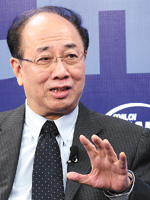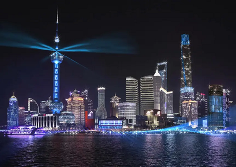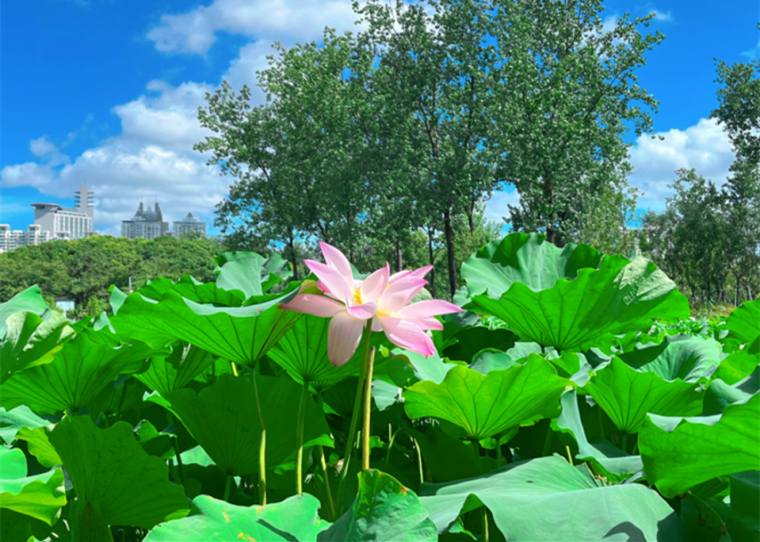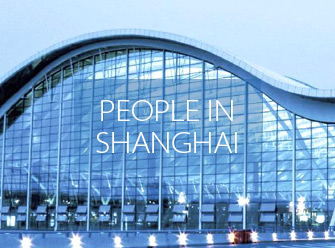Pioneer paves the way for key urban transformation

Zhao Qizheng, former national political adviser and former minister of the State Council Information Office
During his time in the district as its first chief administrator in the 1990s, Zhao Qizheng earned the nickname "Mr Pudong".
Zhao, the former head of the Information Office of the State Council, China's Cabinet, and a former deputy mayor of Shanghai, played a pioneering role in transforming Pudong New Area from farmland into one of the world's most spectacular financial and commercial centers.
The development of Pudong was a strategic decision made by then leader Deng Xiaoping to pioneer China's opening-up.
Discussing the part he initially played in the Pudong project, Zhao, now 80, said: "From the start, the central government made it clear that Pudong was not merely an economic and technological development zone, science park, or a cultural and creative zone. It was a new urban area and part of a modern city in the Asia-Pacific region comparable with the likes of Paris, New York, London, Tokyo and Singapore."
With no previous experience to fall back on, finding a way to build a modern city was the biggest hurdle to overcome in the early stages of Pudong's development.
Zhao said that with hindsight, the district's success is a "story of both prudence and audacity".
"We started with what we already knew, and were open to any innovation as long as it benefited Pudong's opening-up and general improvement," he said.
For example, the district was designed to meet the requirements of an international city-acting as a hub for international trade, international finance, exchange of information, and international transportation.
As an international trade and financial hub, the district had to accommodate overseas investors. This meant that in addition to office space, infrastructure such as roads, bridges, hospitals, schools and parks was required.
A search was also launched for international planning expertise and for contributions to the area's development.
Zhao said it took more than two years to complete planning of the 420,000-square-meter Lujiazui financial zone. Five plans were requested from the same number of international design teams, which "all made sense in their own way", Zhao said. Taken together, these plans were the inspiration for present-day Lujiazui.
The plans for a 10,000-square-meter park surrounded by skyscrapers in the core area of Lujiazui impressed Zhao the most.
After overcoming some initial doubts, he quickly realized that a world-class financial center could not just be a "forest" of glass and cement. It needed a "green lung" to breathe, regardless of cost.
A total of 7 billion yuan ($1.06 billion) was spent on relocating farmers from the area.
Now considered a landmark in China's urban planning, construction of Lujiazui Central Greenland triggered nationwide discussion.
However, Zhao said work on the project progressed relatively smoothly, thanks to the consensus reached on Pudong's development that any innovation to improve the area as an international destination was welcome.
Over the past three decades, Pudong has witnessed a wealth of social and political innovation. The district has been a pioneer in adapting to the global market, use of international business laws and practices, matching economic growth with social progress, and preventing corruption.
Zhao once described the Pudong project as a symphony, with Deng Xiaoping being the chief composer and the central and Shanghai governments the conductor.
"I was one of the first generation of 800 musicians present at its debut," Zhao said. "Now, the symphony has moved to the global stage and we are counting on the younger generation to continue the show."
 Contact Us
Contact Us

 Brilliant light show to illuminate Huangpu River
Brilliant light show to illuminate Huangpu River Maple leaves paint splendid scenery in Pudong
Maple leaves paint splendid scenery in Pudong Appreciate alluring lotus blossoms in Pudong's Century Park
Appreciate alluring lotus blossoms in Pudong's Century Park New pedestrian street boosts Pudong's night economy
New pedestrian street boosts Pudong's night economy 


